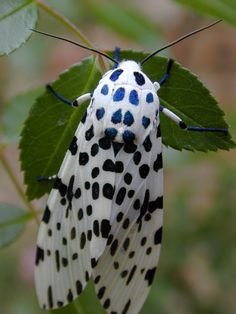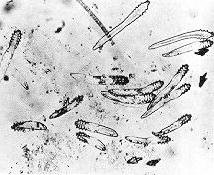Love Butterflies and Moths? They may make you blind!! - Sharing my research.
Hello everyone,
Saturday is here and finally I can sit down and write to share about this rather fascination and visually destructive eye condition that is related with moths and butterflies. We are often amazed by moths and butterflies. We are in frequent contact with them - let it be in the garden, science laboratory , a hobbyists collection or Photography.

This is a research I am working on - (soon to be published) - and awareness is the first step to prevent bad things from happening so I share it with you all about the dangers. Hope you will enjoy the read.
Seasonal Hyperacute Panuveitis (SHAPU)

What is it?

It is a distinct, rapidly destructive intraocular inflammatory disease reported in two-year cycles in odd years since 1975.
When does it occur?

It occurs in epidemic form beginning with the end of monsoon ( August –September) and usually ending with a height of winter in December-January.(3, 4)
Who does it affect?

Affecting children predominantly, the disease is almost always unilateral with rapid and profound loss of vision. Starting as a red-eye with little or no pain, this quickly sturns into something more frightening within days.
What are the signs and symptoms?


Hypopyon (Pus Collection behind your cornea) , a non-dilating pupil(fixed central dark part of the eye behind the cornea) with massive exudation into vitreous ( The inner part of the eye - )start manifesting and eyes then become soft –resulting in "Malignant Hypotony".

“White pupillary reflex in Red eye" with little or no pain remains the hallmark in most of the cases. No gender predilection is reported in any of the series. Youngest in the series - 9-month-old infant but can range up to 45 years.
What are the risks and how does it happen?


Earlier circumstantial evidence of exposure/contact with moths and butterflies has been subsequently reinforced by clinical observation of intrastromal follicles in the cornea in some cases. These hair follicles when examined tend to contain - cyanide and phophates - along with various other antigenic proteins which induce a massive immune reactio in the eye.

The association and causation due to moths remain the strongest.Oscillating between non-infective and infective origin, all cases in early reports were treated either with antibiotics, antivirals, immunosuppressive with uniformly poor results.
Are there any treatment?

Early interventional vitrectomy has shown promising outcomes.
Prevention of contact with moths and butterflies during the period mentioned above is the best way to protect yourself and your children.
However, the fact that there is often no existing effective explanation on causation and treatment adds to the high level of pain and suffering endured by patients and their families.
Why should we be worried?
We expect an epidemic outbreak in the year 2017.
Something that is new is worrisome because we don't have past experience and the knowledge that gives us a sense of control that we can protect ourselves.

A level of worry that doesn't match the evidence is always a fearsome force. But, this is what thrives us – to be curious, to find answers and to add knowledge to one the most exceptional condition and association to be ever recorded.Avoiding contact for the time being could be easiest of solutions during the high risk months.
REFERENCES 1. Malla O, editor Endophthalmitis probably caused by Tussock moth. Report of the Proceedings of the first National Seminar on Prevention of Blindness; 1978. 2. Upadhyay, MP: Eye problems of Nepalese Children (1979). In Baral, M.R. (Ed.) The child in Nepal Nepal Medical Association/International year of the Child (IYC) Seminar. p65 3. Upadhyay MP. Anterior Segment Blindness among Nepalese Children. Nepas. J. 2:69) 4. Upadhayay M, Rai N, Ogg J. Seasonal Hyper Acute Panuveitis in Saarikm (ed): Uveitis update. Amsterdam. Excerpta Medica. 1984. 5. Upadhyay M, Rai N, Ogg J, SHRESTHA B. Seasonal hyperacute panuveitis. Uveitis update. 1984:257-62. 6. Manandhar A. Seasonal hyperacute panuveitis: an update. Current opinion in ophthalmology. 2011;22(6):496-501. 7. Byanju R, Pradhan E, Rai S, Sapkota Y. Visual outcome of vitrectomy in seasonal hyperacute pan uveitis. 2003. 8. Malla O. Sudden blindness in Nepalese children. Kathmandu Univ Med J (KUMJ). 2005;3(1):4-5. 9. Shrestha E. A profile and treatment outcome of seasonal hyper-acute panuveitis. Nepalese Journal of Ophthalmology. 2010;2(1):35-8. 10. Kathil P, Biswas J, Gopal L. Demonstration of varicella zoster virus in a case of presumed seasonal hyperacute panuveitis. Indian journal of ophthalmology. 2005;53(4):270. 11. Smits SL, Manandhar A, van Loenen FB, van Leeuwen M, Baarsma GS, Dorrestijn N, et al. High prevalence of anelloviruses in vitreous fluid of children with seasonal hyperacute panuveitis. Journal of Infectious Diseases. 2012:jis284. 12. Upadhyay MP, Shrestha BR. SHAPU:Forty yras on the mystery prsists. Editorial . Nepal J Ophthalmol 2017; 9(17).
I never thought that moths and butterflies could be a threat to our eyesight.
Thank you for posting this.
Resteemed, upvoted and followed
Thank you. More of my research work to follow!!
Me too! I never thought about it as well, I must admit!